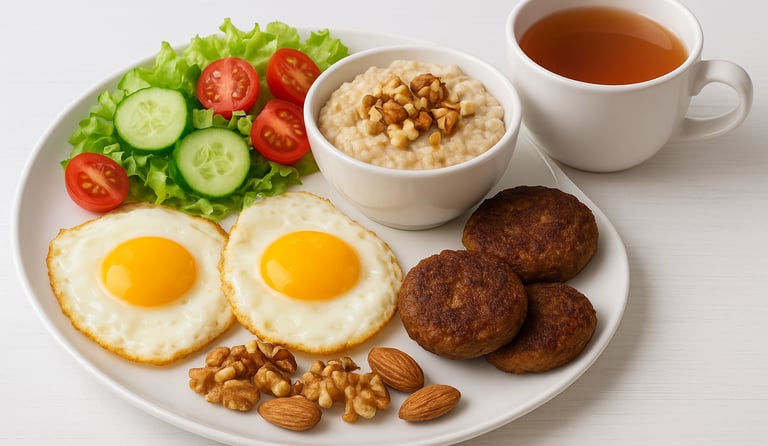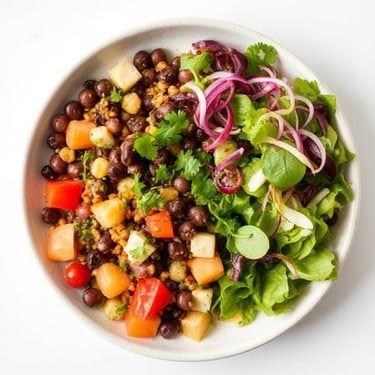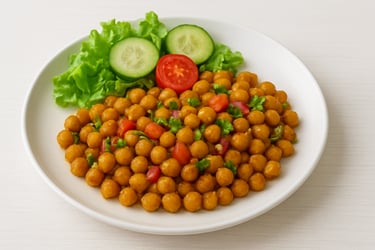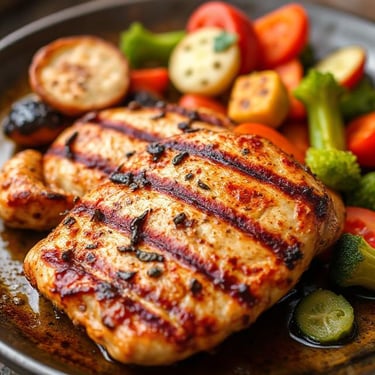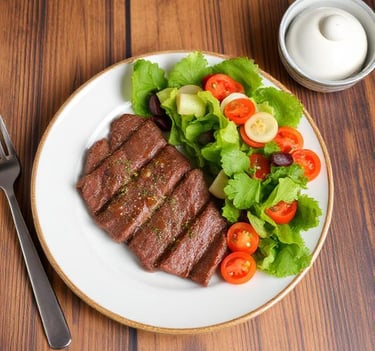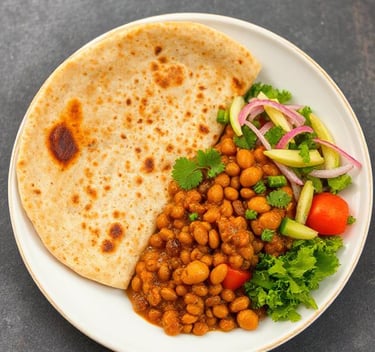Ultimate Weight Loss Guide 2025: How to Lose Fat Naturally Without Dieting
Discover the best way to lose belly fat through a calorie deficit diet, zero sugar, no processed foods, better sleep, and smart meal timing. This science-backed weight loss guide helps burn stubborn visceral fat without sacrificing your favorite foods or happiness — all achievable with little to no exercise. Stay fit and healthy while keeping your busy routine intact.
10/10/20256 min read
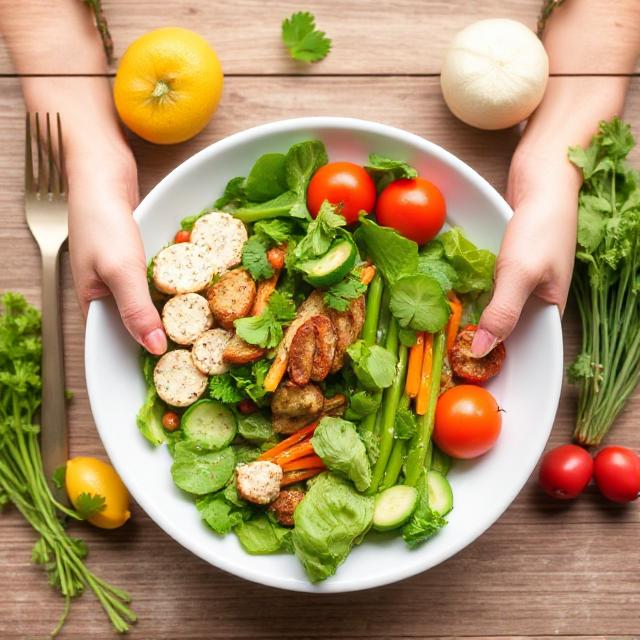

How to Lose Belly Fat Naturally — 9 Proven Steps to Reduce Visceral Fat
Introduction
As we know, belly fat (especially visceral fat) is deeply stubborn and resists reduction through dieting alone. When you create a calorie deficit and cut down on carbs, your body senses an energy shortfall. The brain signals that stored fat must be mobilized. Yet the body doesn’t first tap the fat around your abdomen: it draws from more accessible fat stores in arms, legs, hips. Visceral fat is among the last reserves used — often only in deeper energy crises.
Therefore, targeting belly fat via spot-exercises or expecting your belly to flatten overnight is unrealistic. Instead, the process requires patience, consistency, and a holistic approach. Below are 9 proven steps to guide your journey.
9 Steps to Reduce Belly Fat Naturally
1. Cut Direct Sugar Intake to Zero
When you eliminate added sugars (like candy, sweets, table sugar), your body starts stabilizing insulin levels. High insulin signals fat storage; low and stable insulin promotes fat burning. Without sugar spikes, your cravings decline, energy steadies, and your body more readily draws on stored fat.
Sugar, especially fructose from sweetened drinks, is directly linked to visceral fat accumulation — reducing it removes one of the major drivers of belly fat.
2. Eliminate Bakery Items, Bread, Pasta & Processed Foods
Refined flour, baked goods, cakes, cookies, chips, and canned foods are loaded with simple carbs, trans fats, and additives. These trigger insulin surges and inflammation. By cutting them out:
You reduce “empty calories” (calories with little nutritional value).
Your blood sugar becomes more stable.
Your liver and digestive system function better, enabling more efficient fat metabolism.
Over time, your body becomes more efficient at burning stored fat instead of constantly processing refined carbs.
3. Stop Sugary Drinks, Sodas & Packaged Fruit Juices
Liquid sugar is particularly harmful because the body absorbs it quickly, spiking blood sugar. When you remove:
You avoid huge insulin surges.
You reduce “hidden calories” that don’t fill you up.
Your liver has less work converting excess sugar into fat (especially visceral fat).
Within days of cutting sugary drinks, many people notice less bloating, steadier energy, and reduced appetite.
4. Ensure 7–8 Hours of Quality Sleep, Ideally Before 11 PM
Sleep is a powerful, yet often overlooked, fat-loss tool. When you get good sleep:
Cortisol (stress hormone) levels drop, which reduces fat storage in the belly area.
Hunger hormones ghrelin (which increases appetite) decline, while leptin (satiety hormone) rises — meaning less overeating.
Your insulin sensitivity improves, making your body better at using glucose instead of storing it as fat.
If you go to bed by 11 PM and wake up after ~7–8 hours, your metabolic rhythm stays optimized for burning fat rather than storing it.
5. Set Fixed Meal Times: Breakfast, Lunch, Dinner
Consistency in meal timing helps regulate metabolism and hunger cues. Here’s a suggested schedule (for Asian / local timings):
Breakfast within 1 hour of waking (e.g. 7 AM–8 AM).
Lunch ~4 hours later (around 12 PM–1 PM).
Dinner about 6 hours after lunch (around 6 PM–7 PM).
No solid or sugary intake overnight (7 PM to 7 AM).
This schedule avoids long fasting or chaotic eating windows that confuse hormonal signals. Your body learns when to expect energy and when to burn stored fat.
6. No Snacking Between Meals (Except Unsweetened Tea / Coffee)
Snacking often leads to unnecessary calorie intake and disrupts digestion. By avoiding snacks:
You give your body a better chance to burn stored energy between meals.
You allow digestive rest periods, improving gut health.
You break the habit of mindless eating triggered by stress or boredom.
You may have up to 5 cups of unsweetened tea or coffee per day (without sugar) to stay hydrated and alert — but avoid milkshakes, sweetened coffees, or sugary additions.
7. Adopt a High-Protein Strategy (0.75 g per kg Body Weight)
Recent nutrition trends emphasize high protein diets as central to fat loss. Glimpse Proteins do several things:
Muscle preservation: When you lose weight, you want to lose fat — not lean mass. Protein helps protect muscle.
Thermic effect: Digestion of protein burns more energy (thermic effect) than carbs or fats.
Satiety: Protein keeps you feeling full, reducing overeating.
On average, you should aim for ~0.75 grams of protein per kg of body weight. For example, if you weigh 100 kg, aim for ~75 grams of protein daily.
Examples:
1 egg = ~6 g protein
100 g chicken = ~25 g protein
100 g beef = ~30–35 g protein
100 g lentils / chickpeas / legumes = ~15–23 g protein
1 chapatti (wheat) gives ~3–4 g protein
Using these sources ensures you hit your protein targets without overreliance on supplements.
8. Balance Macronutrients: 50% Protein / 25% Fat / 25% Carbs (Complex + Fiber)
A good macronutrient split helps you feel energized and supports body composition. A suggested breakdown:
50% protein (lean meats, legumes, eggs, fish)
25% healthy fats (olive oil, nuts, avocados, fatty fish)
25% complex carbs + fiber (oats, vegetables, whole grains)
Fiber is low-calorie but fills the stomach, slows digestion, and supports gut health.
Sample Meal Plan:
Breakfast:
2 eggs (boiled or half-fried)
1 bowl of fresh salad (cucumber, tomato, onion, carrot, cabbage)
1 bowl of oatmeal (cooked in water/milk with walnuts, raisins, almonds)
Optional:
2 shami kebabs (Mutton/beef patty with spices)
(a perfect start of the day with Protein rich food)
Lunch:
1 bowl boiled chana or lobia (beans)
Salad: onion, cabbage, cucumber (light olive oil spray)
Or
1 piece grilled chicken breast or lean Mutton/beef/Fish
Salad: onion, cabbage, cucumber (light olive oil spray)
Optional: 1 Bowl of Fresh Fruit
(Low carb diet plan for lunch)
Dinner:
Lentils, vegetables or any curry + 1 roti (whole grain)
Or
1 Bowl of rice with lentils/chickpeas/chicken/fish/Mutton/beef etc.
Or
1 piece grilled chicken or lean Mutton/beef with fresh salad
By spacing and selecting your meals like this, you support stable energy, reduce cravings, and guide your body to burn stored fat.
(For many, a meal just doesn’t feel complete without roti (chapati)
9. Be Patient and Consistent — Belly
Fat Takes Time
The body doesn’t reduce belly fat first — that reserved visceral fat only comes off slowly after more accessible fat stores shrink. Expect gradual progress. Don’t be discouraged if after 2 weeks your belly isn’t gone.Stick with the above steps for at least 8–12 weeks consistently. Track your progress with body measurements (waist, hips) rather than just the scale. Celebrate non-scale wins: clothes fitting better, increased energy, improved mood.
Why Belly Fat Is So Stubborn
Visceral fat is metabolically different — it holds more alpha-2 receptors, which slow the release of fat for energy, and fewer beta-2 receptors which allow breakdown. Because of this, your body treats belly fat as a reserve, only tapping it in deeper energy deficits. That’s why “belly fat burner workouts” or doing countless crunches usually don’t yield major belly lean-downs in isolation.
Extra Tips & Best Practices for Fat Loss Success
Drink plenty of water (at least 2–3 liters daily) — hydration supports metabolism and fat mobilization.
Fiber & gut health: Include high-fiber foods (beans, vegetables, oats) and fermented foods (yogurt, kefir) to support a healthy microbiome — which in turn influences weight regulation.
Resistance training + cardio: Building muscle speeds up your basal metabolic rate. HIIT (High-Intensity Interval Training) is especially effective for visceral fat reduction.
Mindful eating & stress management: Mindless eating and chronic stress both drive overeating and cortisol-related fat storage. Use practices like meditation or journaling.
Track and adjust: Use food logs, apps, or journals to monitor your intake. If your weight loss stalls, reduce calories slightly or adjust macro ratios.
Avoid using vegetable oils in your food. Instead, opt for Desi Ghee (clarified butter), olive oil, or coconut oil — all of which are healthier fat sources.
Vegetable oils, especially those used in processed and fried foods, contain high levels of omega-6 fatty acids and oxidized fats that can cause inflammation in the body. Regular consumption of such oils may disrupt your body’s natural fat balance, leading to weight gain, hormonal imbalances, and poor heart health. Choosing natural fats like Desi Ghee or olive oil helps promote better digestion, stable energy levels, and improved metabolic health.
Conclusion
Losing belly fat isn’t about quick fixes, spot targeting, or magic pills. It’s about creating a sustainable lifestyle that combines:
Eliminating sugar, processed foods, and sugary drinks
Structured meal timing
High-protein, balanced macronutrients
Quality sleep
Patience + consistency
If you stick with it, your body will gradually start burning the stubborn visceral fat that you once thought was impossible to lose.
⚠️ Disclaimer
The information provided in this article is for educational and informational purposes only and is not intended as medical advice. Always consult a qualified healthcare professional, nutritionist, or doctor before starting any new diet, exercise, or weight loss program — especially if you have any pre-existing medical conditions or are taking medication. Individual results may vary based on lifestyle, age, and body type. The author and website are not responsible for any health issues that may arise from following the tips or advice shared in this blog.
